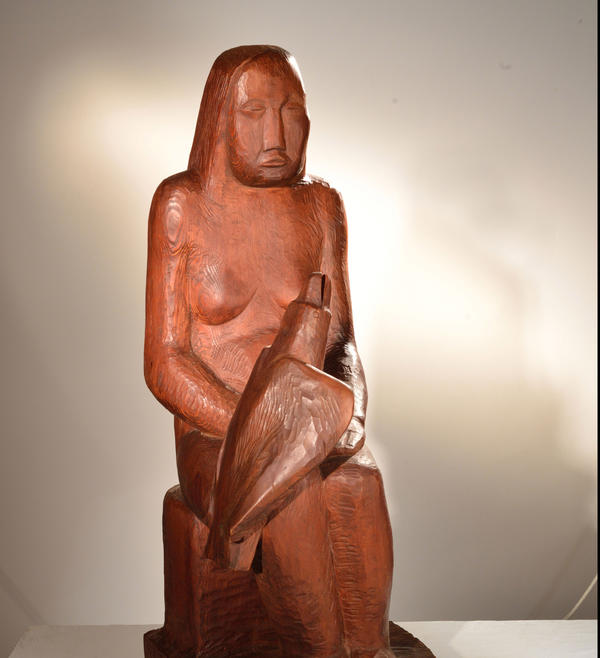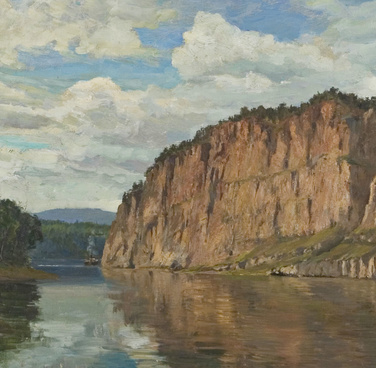Yakut sculptor Semyon Prokopiev created the composition 'Woman and Raven' in 1990. He portrayed a naked woman with a raven sitting on her lap. As a material for the sculpture, the master used wood.
Since the 1980s – 1990s, many Yakut artists turn to ancient subjects and materialize them in volumetric plastic forms. These trends have been reflected in Prokopiev’s art. He is interested in ethnic motifs and uses traditional techniques of national sculpture in his works. For example, the artist often reproduces the Northern peoples’ labor, figures of reindeer herders, hunters and shepherds, and carves out of wood characters from the ancient Yakut myths.
Prokopiev works in the genre of easel sculpture. Artists of this movement usually depict the object in full size and give it an independent meaning. Such works do not depend on the environment, for example, the interior. They are recommended to be viewed at close range.
'Woman and Raven' is an example of Prokopiev’s 'easel plastics'. He turned to two main images in Yakut mythology – a female figure and a bird. Woman was considered the main guardian of the hearth, children’s teacher and the basis of all life on earth. The raven that sits on her lap is a shaman bird and a symbol of supernatural powers, the gift of foresight. It was believed that the raven’s father was Uluu Toyon (from Turkic – 'the great master') – the head of the evil spirits of the Upper world and the patron of Yakut shamans.
The sculptor used a minimalist interpretation of the subject – there are no minute details in the art work. The female and raven figures are static, and their silhouettes are clearly outlined. The face of the heroine has a general character and is devoid of individual features. Using these techniques, Prokopiev gives a touch of a sacred rite to the sculpture.
Since the 1980s – 1990s, many Yakut artists turn to ancient subjects and materialize them in volumetric plastic forms. These trends have been reflected in Prokopiev’s art. He is interested in ethnic motifs and uses traditional techniques of national sculpture in his works. For example, the artist often reproduces the Northern peoples’ labor, figures of reindeer herders, hunters and shepherds, and carves out of wood characters from the ancient Yakut myths.
Prokopiev works in the genre of easel sculpture. Artists of this movement usually depict the object in full size and give it an independent meaning. Such works do not depend on the environment, for example, the interior. They are recommended to be viewed at close range.
'Woman and Raven' is an example of Prokopiev’s 'easel plastics'. He turned to two main images in Yakut mythology – a female figure and a bird. Woman was considered the main guardian of the hearth, children’s teacher and the basis of all life on earth. The raven that sits on her lap is a shaman bird and a symbol of supernatural powers, the gift of foresight. It was believed that the raven’s father was Uluu Toyon (from Turkic – 'the great master') – the head of the evil spirits of the Upper world and the patron of Yakut shamans.
The sculptor used a minimalist interpretation of the subject – there are no minute details in the art work. The female and raven figures are static, and their silhouettes are clearly outlined. The face of the heroine has a general character and is devoid of individual features. Using these techniques, Prokopiev gives a touch of a sacred rite to the sculpture.
'The interpretation of national and ancient plastic traditions was embodied in the sculpture 'Woman and Raven', wrote art critic Lyudmila Podprugina. Prokopiev’s works refer to the national motifs of northern culture and raise issues of good and evil, being and the universe. For this, the sculptor is often called an 'artist of a philosophical mind' and is reckoned among the generation of masters, who glorified Yakut sculpture in the 20th century.



